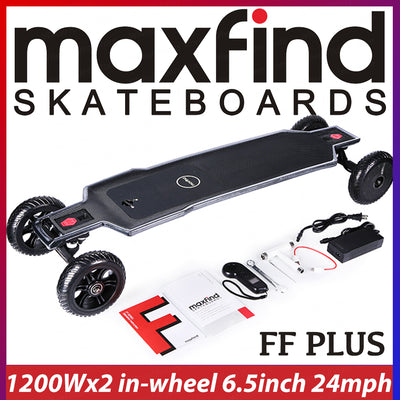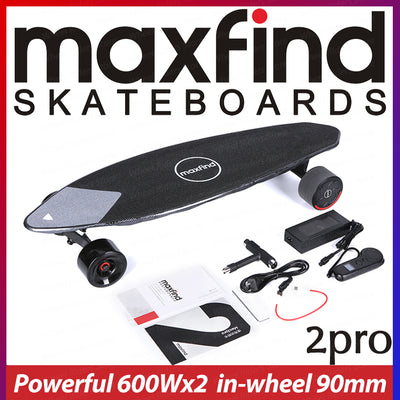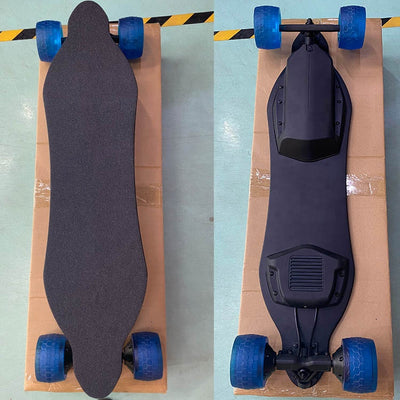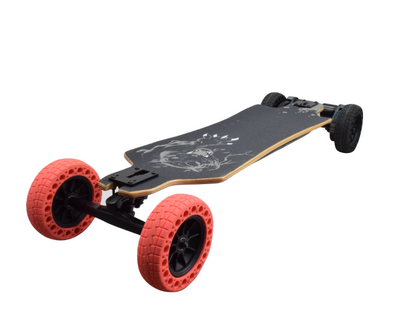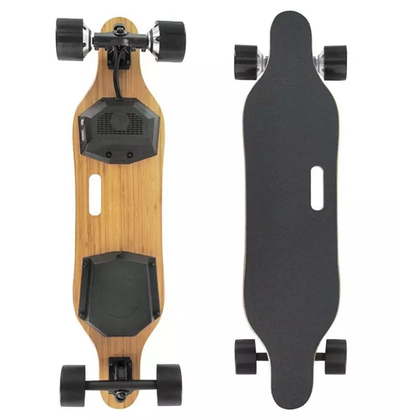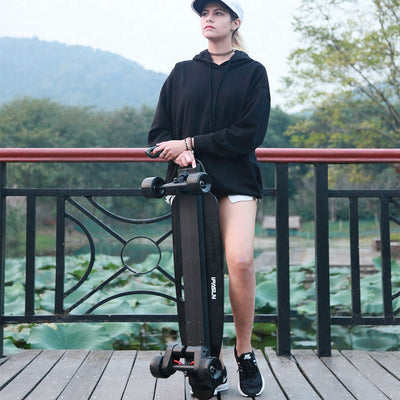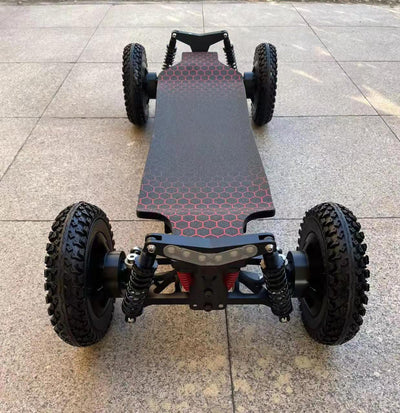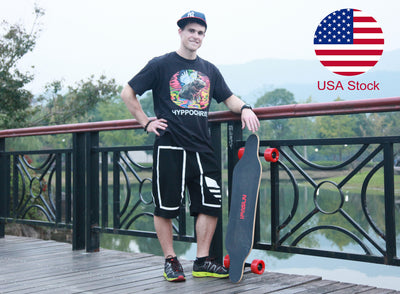Skate Like A Pro: 3 Electric Skateboard Tips
Posted by Tom Lee on
To help get you started with your new Evolve board, we’ve put together a few quick electric skateboard tips for beginners and advanced riders. You’ll be balancing and carving like a pro in no time. There’s a lot to learn and experience out there, but our electric skateboard tips are the perfect place to start. And from the very bottom of our hearts, thank you so much! Now enjoy the ride.
Find Your Footedness:
What is footedness? Well, it isn't all that dissimilar from handedness. Are you right handed, or are you left handed? This isn't something you thought much about (or at all) as a child–you simply chose what felt the most comfortable. Likewise, with riding, we recommend not thinking too much about it at first; simply step on your board instinctively. If your left foot is forward, toward the nose of the board, you're standing in a "regular" stance. Conversely, leading with your right foot indicates a "goofy" stance. Despite these designations, there's no right or wrong way to stand on an electric skateboard and one stance isn’t any better than the other.
Ultimately, as a matter of preference, choose what you're most comfortable with. Try both stances and see what works for you. Most riders, in any board sport such as skateboarding, longboarding, snowboarding, or even surfing, stand regular-footed or with their left foot forward. This is primarily because right-handedness pervades the world, with roughly 90% of the population being right-handed. But, we caution against choosing your primary footedness based on your hand dominance. Do what feels most natural as this will be what’s most comfortable.
If you're nervous about stepping on a board for the first time, stand next to it, assume a riding stance, and imagine yourself riding. Keep your feet about shoulder width apart, move your body a little, and bend your knees. Next, switch stances and repeat. What feels the most comfortable? In which stance do you have better balance? It might sound like a silly exercise, but knowing how you prefer to ride or stand is crucial because it not only keeps you safe, it helps you enjoy the sport. Choosing the right stance makes riding easier and less stressful on your mind and body, to be sure, but understanding how you balance best will help you carve better–and that's what electric skateboarding is all about.
If you've been skating for a while, try experimenting with a "switch" stance. Skating switch means to ride in the opposing, non-dominant stance. In other words, if you normally ride regular-footed, try riding and carving in a “goofy” stance; it's a fun–and often difficult–challenge for most riders, regardless of skill level!
Perfect Your Posture:
Another electric skateboard tip is to perfect your posture. Whether you’re experienced or just starting out, riding an electric skateboard is all about feeling comfortable. Standing on top of, and even balancing on, an electric skateboard can be a bit intimidating at first, especially considering how fast they can go. Consequently, many new riders assume a stiff posture in response to their initial fear. But, standing firm is actually an incredible hindrance. Not only does it make maneuvering difficult, it makes it dangerous. It also looks a little awkward!
With the right body posture, not only will you stand better on your board, you’ll also feel more confident balancing on a skateboard. Standing with your arms out and relaxed, the ideal riding posture is one that is slightly upright and balanced—but never stiff. At all times you want to maintain a slight, responsive bend in your knees as this will help you balance and react.
And don’t worry, in time and with a little practice, you’ll find the posture that works best for you. Once you understand the fundamentals of balancing on a skateboard and continue to successfully put them into practice, you can begin experimenting with different postures and techniques (such as bending your knees almost to a complete crouch and leaning your torso forward) that exhibit your personal style or achieve maximum speed.

Compose Your Carve:
Carving is the process of turning or weaving back and forth in motion, typically in rhythmic "S" shape. While fun, carving is also a demonstrative means of aesthetic self-expression. Once you've mastered the art of carving, you can refine your approach by adding your own nuances and flourishes to truly have a style all your own. So, how do you carve on an electric skateboard?
It's important to use your entire body. Many beginners incorrectly assume that carving on a skateboard, or getting the board to turn in the direction they want, is all in their feet. While your feet have a role to play, you ultimately want to make sure you're using your entire body as you cut in and out of turns; this includes your shoulders, as well as your arms. Your torso—and especially your shoulders—are actually going to be doing most of the work when carving and the rest of your body is going to respond naturally—instinctively. Skateboard carving, electric or otherwise, is all about going with the flow.
It's worth keeping in mind the following:
- Keep your knees bent
- Keep your arms out
- Keep your head up
These three things will help you balance. Sure, the first two points might go without saying, but what about the last one? Much like riding a bike–or even walking for that matter–if you keep your head up and look where you want to go, your body will follow your eyes. But this phenomenon is more than just a cool fact, it helps you balance and appear more fluid when carving on a skateboard, even allowing for deeper, more stylized carves.
To ride, lean, or turn toe-side (or more simply in the direction the front half of your body is facing), rotate your torso and turn your front shoulder in toward your toes. By turning your front or leading shoulder inward, you're consequently rotating your hips and placing pressure on your toes, both of which help facilitate a clean, successful toe-side carve. From a toe-side carve, turn heel-side (or behind you) by turning your front shoulder up and back out.
Many riders, regardless of experience, have more difficulty performing one action over the other—and falling is always frustrating. But, try not to overcompensate and make sure your feet never leave the board; you want to lift pressure on one foot or the other without physically lifting your toes or heels. If you're having trouble turning toe-side, try placing more pressure on the toes of your front foot and less on your back foot. If heel-side is proving to be a bigger challenge, while leaning back on your heels, try placing more pressure on your back foot and relieve some of the pressure on your front. Using the momentum from one direction to carry you into the other, is key—and understanding how to use it in your favor can really help you perfect your carving.
Practice makes perfect and, as always, take things slow. Carving on a skateboard doesn’t come naturally to most riders. In time you’ll become so good that you can start experimenting with different techniques and personal, aesthetic flourishes whether you’re simply cruising down the road or carving up the boardwalk.
Happy riding!
- Tags: Electric Skateboard

